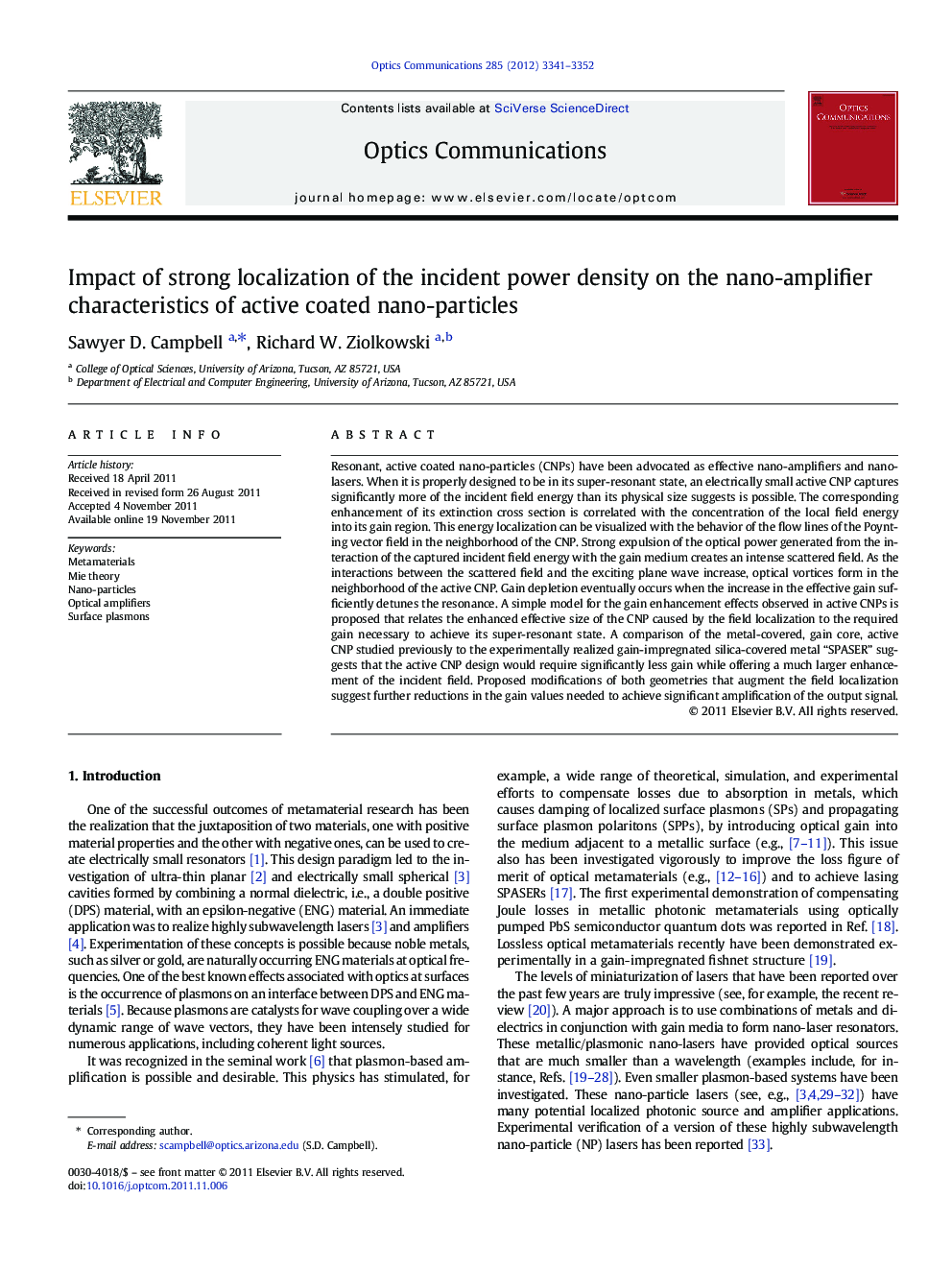| Article ID | Journal | Published Year | Pages | File Type |
|---|---|---|---|---|
| 1536164 | Optics Communications | 2012 | 12 Pages |
Resonant, active coated nano-particles (CNPs) have been advocated as effective nano-amplifiers and nano-lasers. When it is properly designed to be in its super-resonant state, an electrically small active CNP captures significantly more of the incident field energy than its physical size suggests is possible. The corresponding enhancement of its extinction cross section is correlated with the concentration of the local field energy into its gain region. This energy localization can be visualized with the behavior of the flow lines of the Poynting vector field in the neighborhood of the CNP. Strong expulsion of the optical power generated from the interaction of the captured incident field energy with the gain medium creates an intense scattered field. As the interactions between the scattered field and the exciting plane wave increase, optical vortices form in the neighborhood of the active CNP. Gain depletion eventually occurs when the increase in the effective gain sufficiently detunes the resonance. A simple model for the gain enhancement effects observed in active CNPs is proposed that relates the enhanced effective size of the CNP caused by the field localization to the required gain necessary to achieve its super-resonant state. A comparison of the metal-covered, gain core, active CNP studied previously to the experimentally realized gain-impregnated silica-covered metal “SPASER” suggests that the active CNP design would require significantly less gain while offering a much larger enhancement of the incident field. Proposed modifications of both geometries that augment the field localization suggest further reductions in the gain values needed to achieve significant amplification of the output signal.
